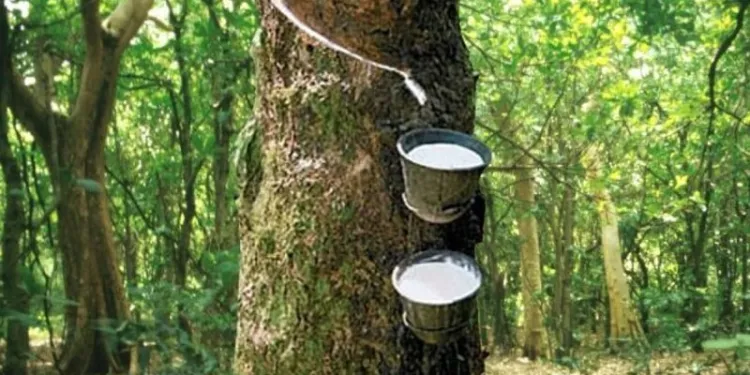Rubber price re-bound to Rs 195, a kg after a short stint of decline during last weekend. Bench mark RSS-4 today quoted Rs 195 which dropped to Rs 188 on Saturday. On last Wednesday, Kochi spot market quoted Rs 194, a Kg, but suddenly it dropped to Rs 191 on Friday and then to Rs 188 on Saturday.
According to experts the sudden fall was due to speculative move on the futures trading and the market regained strength as the global market is consolidating now. Bangkok market today quoted Rs 162/Kg from a low of Rs 149 on 6th of this month. Local market moved against the global trend on last weekend, which has now been reversed today.
Heavy rain in Kerala, especially in the High Ranges of the State, for the last couple of months has affected rubber production badly leading to sharp rise in local prices, irrespective of the world trend till last weekend.
Rain had affected natural rubber production very badly in July as monthly output dropped 32.4 per cent. In July, production was 46,000 tones as against 68,000 tones in last July, according toRubber Board data. This is the sharpest fall in monthly production during last four years. Around 47 per cent drop in monthly output recorded in June also at 36,000 tones.
This also caused a fall of 18.6 per cent in the cumulative output during April – July period of the current financial year. April – July figure stood at 196,000 tones as against 240,700 tones in the same period of last financial year. The sharp fall in production terribly upset the supply of the commodity, leading to heavy increase in the prices.
This is against the global trend where prices were depreciating, almost on a daily basis. In India, even at higher prices rubber is a rare commodity as huge volumes are not available in the market.
According to growers the dropping trend in production would continue in this month also as heavy rain obstructed tapping in most parts of Kerala. Rain and strong wind also caused serious damages to rubber plantations in some districts. It also affected the quality of both latex and sheet rubber as processing is not possible in adverse climatic conditions.
Meanwhile, consumption increased marginally at 0.6 per cent in July, as per the data of the board. In July 82,500 tones were consumed as against 82,000 tones. Cumulative consumption in April – July period dropped to 330,480 tones as against 337,080 tones in the same period of last FY, recording 2 per cent drop.
Heavy increase in local prices in turn, caused surge in the import of rubber. 39 per cent increase in import recorded in July compared to July, 2012.
In this July 29,311 tones were imported as against 21,059 tones. During April – July period total import was 87,656 tones as against 80,178 tones in the same period of last fiscal year. Export was just 40 tones during last month as against 1882 tones, recording a fall of 98 per cent and cumulative export dropped to 1928 tones as against 4907 tones in April – July period of 2012. As per the data of the board total stock is 178,000 tones as against 216,000 tones in July, 2012. This is for the first time during last couple of years Rubber Board records a drop in the stock of rubber in the country. Stock at the end of June ’13 was 180,000 tones whereas this was 221,000 tones in June, 2012.
Source: business-standard.com




























